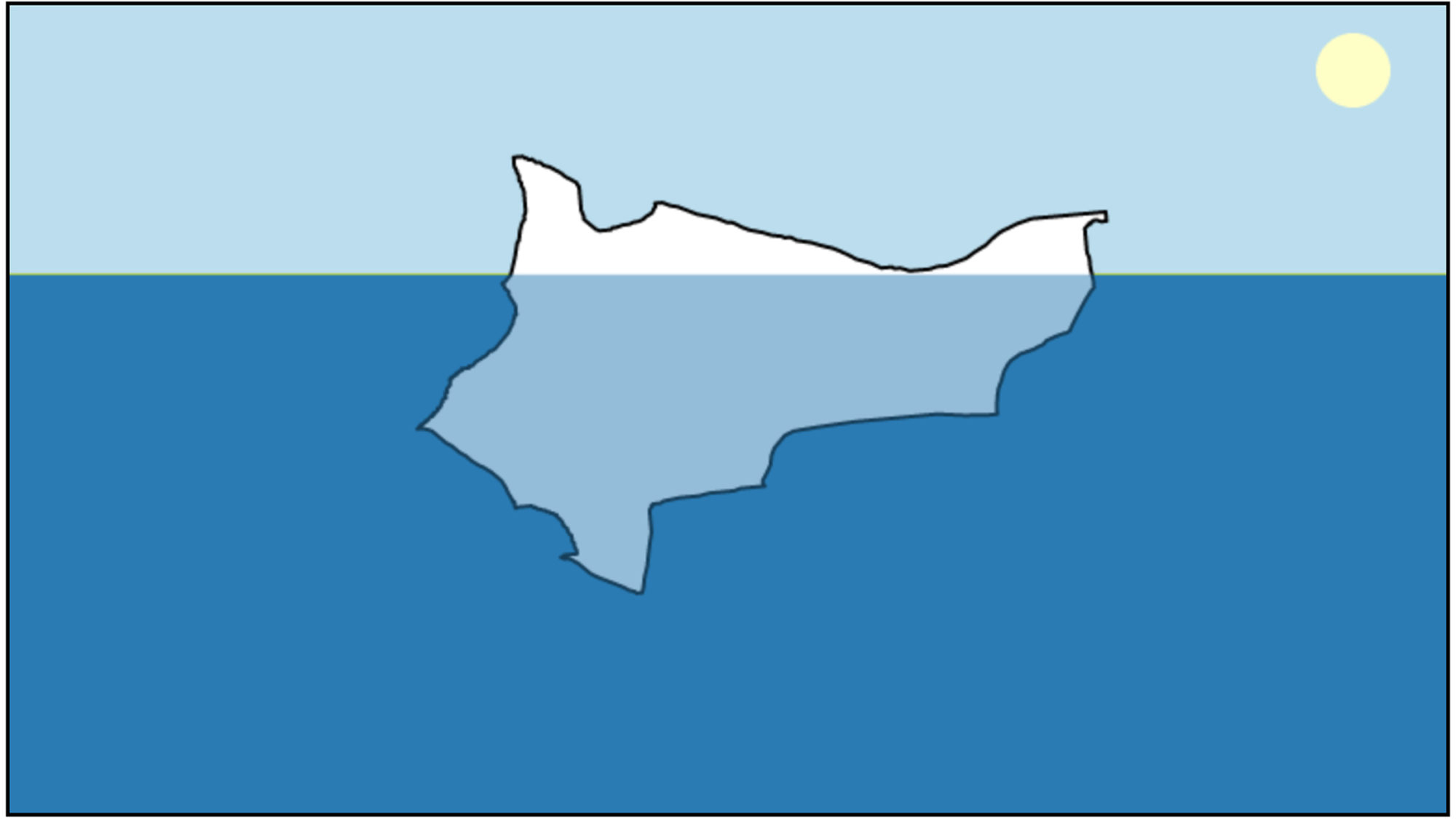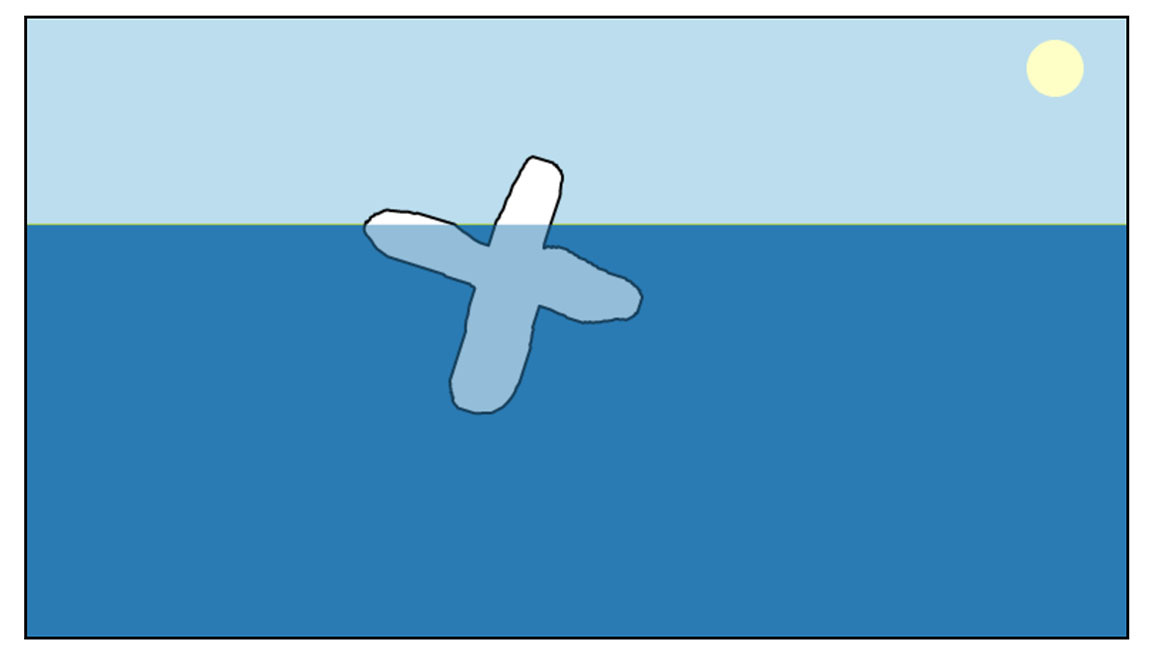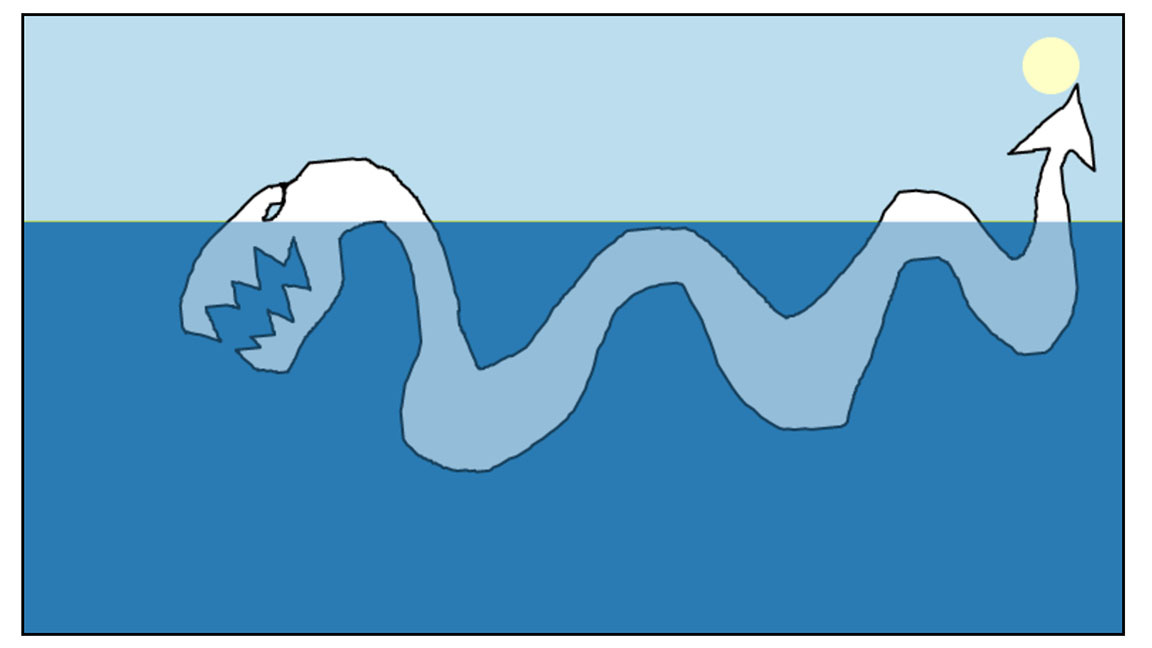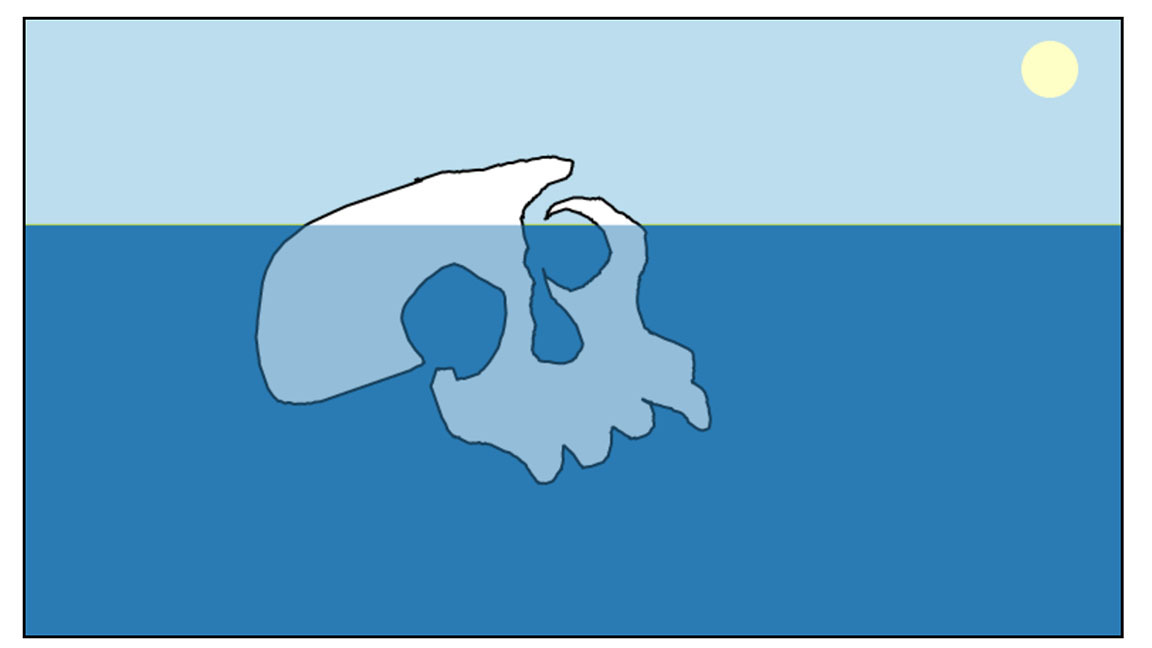
ONE OF THE central, and usually most antagonizing, functions of the contemporary internet is the way it enables people to tell other people they’re wrong about something. But there’s a nice way to do it, and that way is demonstrated by our favorite website of the week, Iceberger.
Iceberger is dedicated to teaching its users that the most popular dramatic depictions of icebergs—as little floating mountains with great vertical pillars stretching underwater below them—are not #actually how floating bodies of ice behave. It does this not by shaming or quote-tweeting you, but by inviting you to draw your own iceberg on a simple scene of water and sky, so you can watch how it settles into a stable orientation. [Fig. 1]

The interface is easy and intuitive. The results are not necessarily intuitive! It’s easy enough to grasp the basic popular-iceberg-image debunking principle: ice wants to float with its long axis parallel to the surface. [Figs. 2-4]

But once you get that, the natural next step is to start drawing weird icebergs in the belief that, armed with your new expertise, you can make them go a certain way. Sometimes they do, and sometimes they don’t. One propeller-shaped iceberg might rotate a considerable distance before settling; another, thanks to minor variations in freehand doodling, might just sit down where it started. [Fig. 5]

You find yourself testing your wits in an open-ended struggle of man against nature, or against a quick and dirty two-dimensional approximation of nature. There are mysteries in these waters. [Fig. 6]

Don’t just read about it—go draw an iceberg! [Fig. 7]

